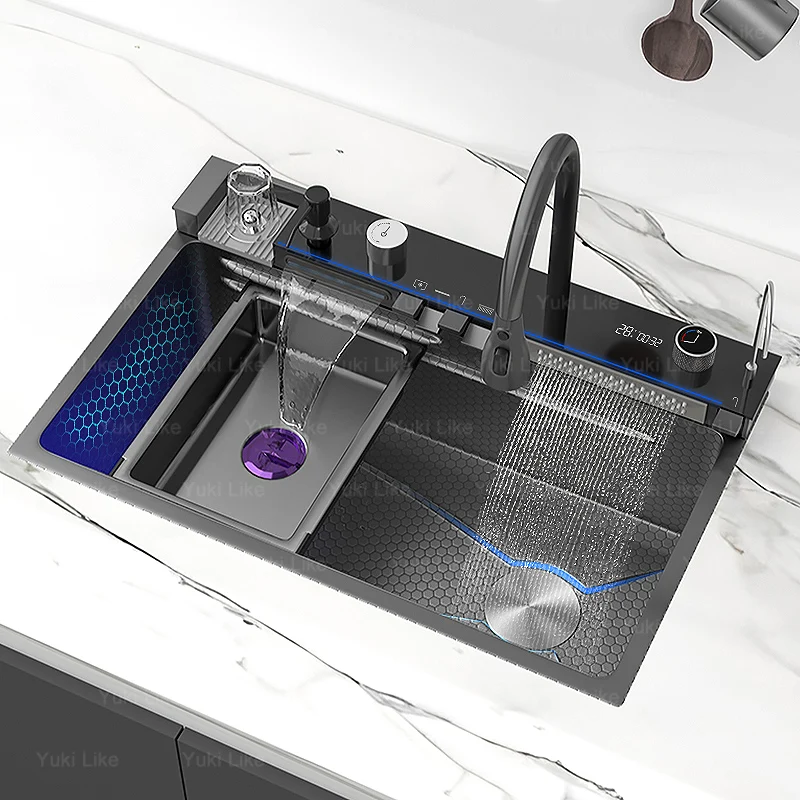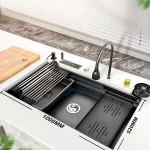Stainless steel sinks are a popular choice in modern kitchens due to their sleek appearance, durability, and resistance to staining and corrosion. However, maintaining their pristine look can be a challenge, especially when dealing with scratches and stains that can mar their surface. In this comprehensive guide, we’ll delve into how to clean a stainless steel sink without scratching, incorporating expert tips and techniques to keep your sink in top-notch condition.
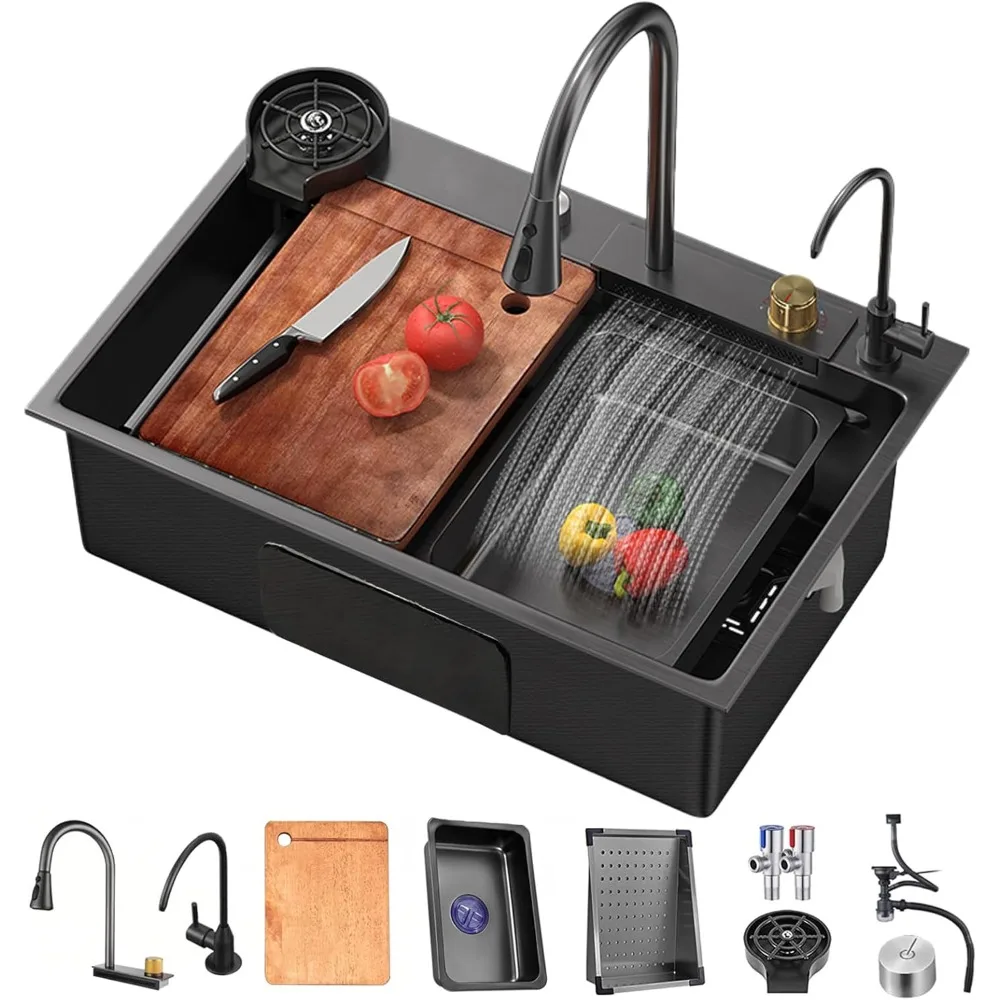
Understanding Stainless Steel and Its Care Requirements
Stainless steel, a durable alloy composed of iron, carbon, and chromium, resists rust and staining, making it an ideal material for kitchen sinks. However, it’s not entirely immune to damage. Understanding the properties of stainless steel and its care requirements is crucial to maintaining its luster. The chromium layer that provides its rust resistance can be compromised by harsh chemicals and abrasive scrubbing tools, leading to corrosion and scratches. This is why knowing the right cleaning techniques and using the appropriate cleaning agents is essential.
Choosing the Right Cleaning Materials
Choosing the correct cleaning materials is the first step toward maintaining a scratch-free stainless steel sink. Avoid using abrasive scrubbers like steel wool or harsh scouring pads, which can leave unsightly scratches on the surface. Instead, opt for soft sponges, microfiber cloths, or non-abrasive scrubbers specifically designed for stainless steel. When it comes to cleaning agents, steer clear of bleach, chlorine, and other harsh chemicals. These substances can damage the protective chromium layer and lead to discoloration and corrosion. Instead, use mild dish soap, baking soda, or specially formulated stainless steel cleaners that are gentle yet effective.
Daily Maintenance Tips
Regular maintenance is key to keeping your stainless steel sink looking new. After each use, rinse the sink with warm water to remove food particles and residues. Use a soft cloth or sponge to wipe down the surface, ensuring that no water spots or soap scum remain. Dry the sink thoroughly with a microfiber cloth to prevent water spots and mineral deposits. Make it a habit to clean up spills and stains immediately, as some substances, like acidic foods and hard water, can cause etching or pitting if left on the surface for too long.
Deep Cleaning Techniques
Even with regular maintenance, your stainless steel sink will occasionally require a deeper clean to remove stubborn stains and restore its shine. Begin by creating a cleaning paste with baking soda and water. Apply the paste to the sink using a soft sponge, scrubbing in the direction of the grain to avoid scratching. For particularly tough stains, white vinegar can be a helpful addition. Spritz the vinegar over the baking soda paste and let it fizz for a few minutes before scrubbing. Rinse the sink thoroughly with warm water and dry with a microfiber cloth.
Using Natural Cleaning Solutions
Natural cleaning solutions are not only effective but also safe for both your stainless steel sink and the environment. A mixture of equal parts white vinegar and water serves as an excellent natural cleaner. Vinegar’s acidic properties help break down mineral deposits and soap scum without damaging the steel. Another effective natural cleaner is lemon juice, which can be mixed with baking soda to form a gentle yet powerful paste. Not only does this combination clean effectively, but it also leaves a fresh, pleasant scent.
Polishing Your Stainless Steel Sink
Polishing your stainless steel sink regularly helps maintain its gleaming finish and protect it from fingerprints and water spots. Use a stainless steel polish or a small amount of olive oil on a soft microfiber cloth. Rub the polish or oil onto the sink’s surface in the direction of the grain. This process not only enhances the sink’s shine but also creates a protective barrier that repels water and stains. Remember to buff the sink with a clean, dry cloth afterward to remove any excess polish or oil.
Handling Rust and Stains
Despite your best efforts, you might occasionally find rust spots or stains on your stainless steel sink. These can often result from leaving metal objects, like steel wool pads or cast iron pans, on a wet sink surface, which promotes rust formation. To tackle rust spots, create a paste using baking soda and a small amount of water. Apply the paste to the rusted area and gently scrub with a soft sponge. For more stubborn spots, you can use a mixture of lemon juice and cream of tartar. Apply the mixture to the rust spot, let it sit for a few minutes, then scrub gently and rinse thoroughly.
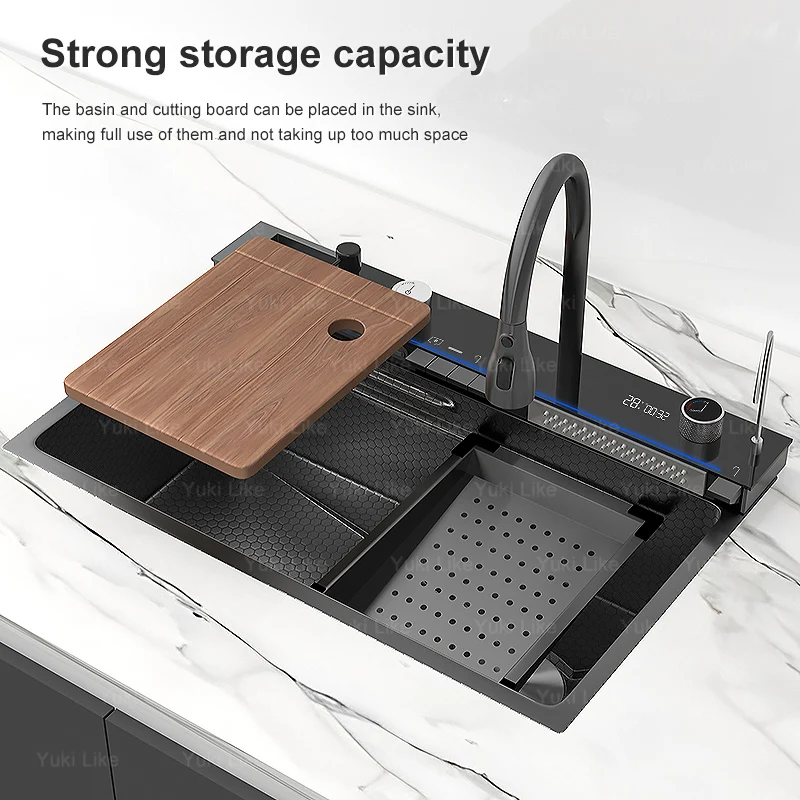
Precautions and Things to Avoid
To ensure the longevity of your stainless steel sink, it’s important to know what to avoid. Never use metal scrubbers or brushes, as they can scratch the surface. Avoid leaving acidic foods and liquids, such as tomato sauce or citrus juices, sitting in the sink for prolonged periods, as they can cause etching. Be cautious with sharp objects that can cause deep scratches, and always use a cutting board when chopping or slicing near the sink. Finally, avoid placing hot pans directly in the sink, as extreme temperature changes can damage the steel.
The Benefits of Stainless Steel Sink Grids
Investing in a stainless steel sink grid can provide an added layer of protection against scratches and stains. These grids elevate dishes and pans, preventing direct contact with the sink’s surface. They also help maintain proper drainage and airflow, reducing water spots and mineral deposits. Using a sink grid can significantly extend the life of your stainless steel sink by minimizing daily wear and tear.
Dealing with Hard Water Stains
Hard water can leave unsightly mineral deposits on your stainless steel sink. To combat these stains, fill a spray bottle with equal parts white vinegar and water, and apply the solution to the affected areas. Allow it to sit for a few minutes to dissolve the minerals. For stubborn stains, you can create a paste with baking soda and vinegar, applying it directly to the stain and scrubbing gently with a soft cloth or sponge. Rinse thoroughly and dry the sink to prevent new stains from forming.
Addressing Common Myths
There are several myths surrounding stainless steel sink maintenance that can lead to improper care and damage. One common myth is that using bleach or other harsh chemicals is necessary for deep cleaning. In reality, these substances can damage the sink’s protective layer, leading to corrosion. Another myth is that stainless steel does not require regular maintenance. In truth, consistent care is essential to prevent stains and scratches. Understanding and debunking these myths will help you avoid common pitfalls and ensure the longevity of your sink.
Preventing Scratches and Maintaining Shine
To prevent scratches and maintain the shine of your stainless steel sink, be mindful of how you use and clean it. Always use non-abrasive cleaning tools and follow the grain of the steel when scrubbing. Dry the sink after each use to prevent water spots and mineral deposits. Regularly polish the sink to create a protective barrier and enhance its sheen. By incorporating these practices into your cleaning routine, you can keep your sink looking new for years to come.
Regular Inspection and Maintenance
Routine inspection and maintenance of your stainless steel sink can help you identify and address minor issues before they become major problems. Check for any signs of rust, scratching, or discoloration and address them promptly using the appropriate cleaning techniques. Regularly inspect and clean the drains and faucets to ensure proper functioning and prevent blockages. Keeping a close eye on your sink’s condition and performing regular maintenance will ensure its longevity and optimal performance.
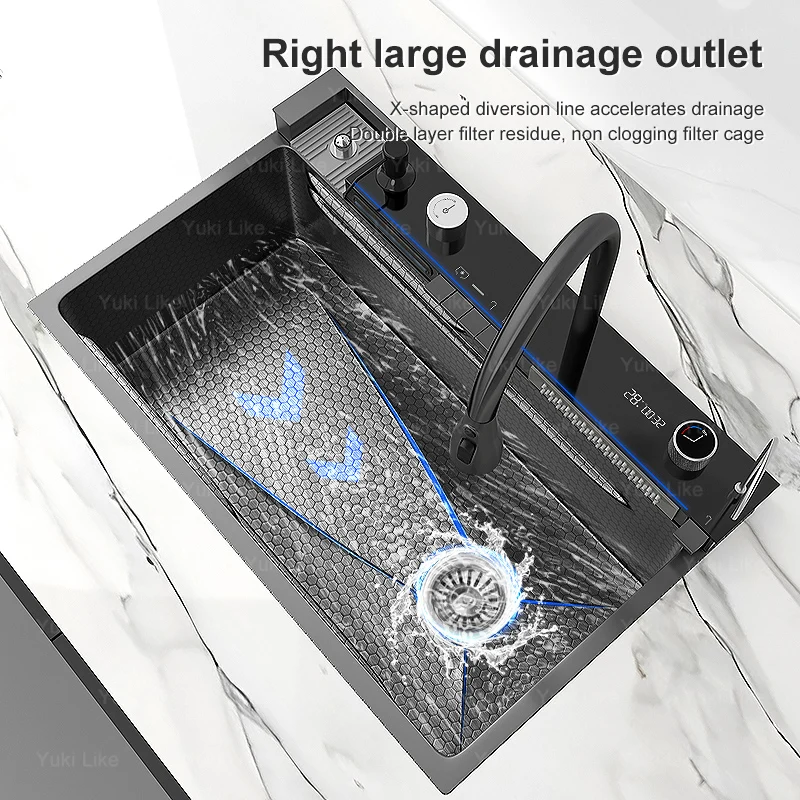
Conclusion: Keeping Your Stainless Steel Sink Pristine
Stainless steel sinks offer a combination of durability and aesthetic appeal, making them a favorite in many kitchens. By adhering to the expert tips and techniques outlined in this guide, you can keep your sink looking brand new without the risk of scratching or damage. From choosing the right cleaning materials and incorporating natural solutions to regular maintenance and polishing, every step contributes to preserving the sink’s luster and functionality. Remember, the key to maintaining a pristine stainless steel sink is consistent care and attention to detail, ensuring it remains a highlight of your kitchen for years to come.
